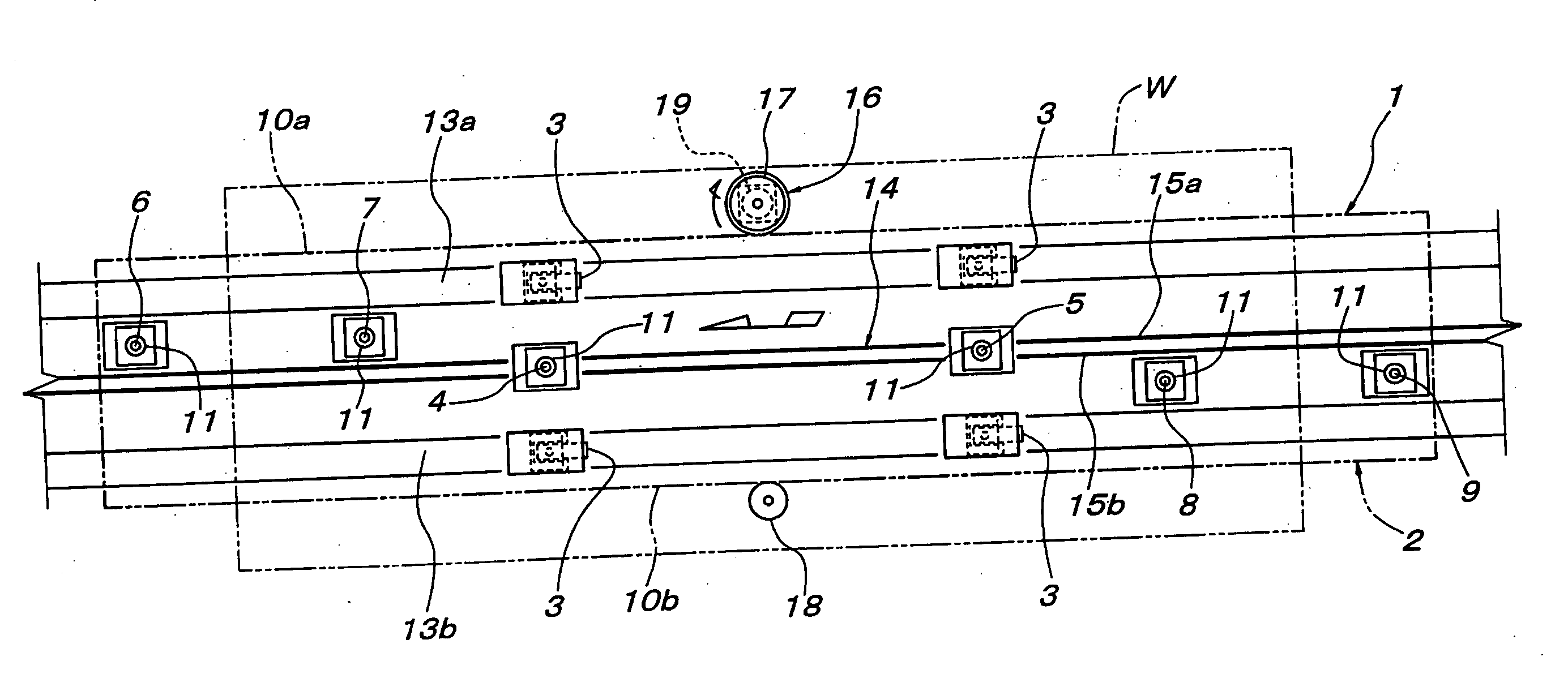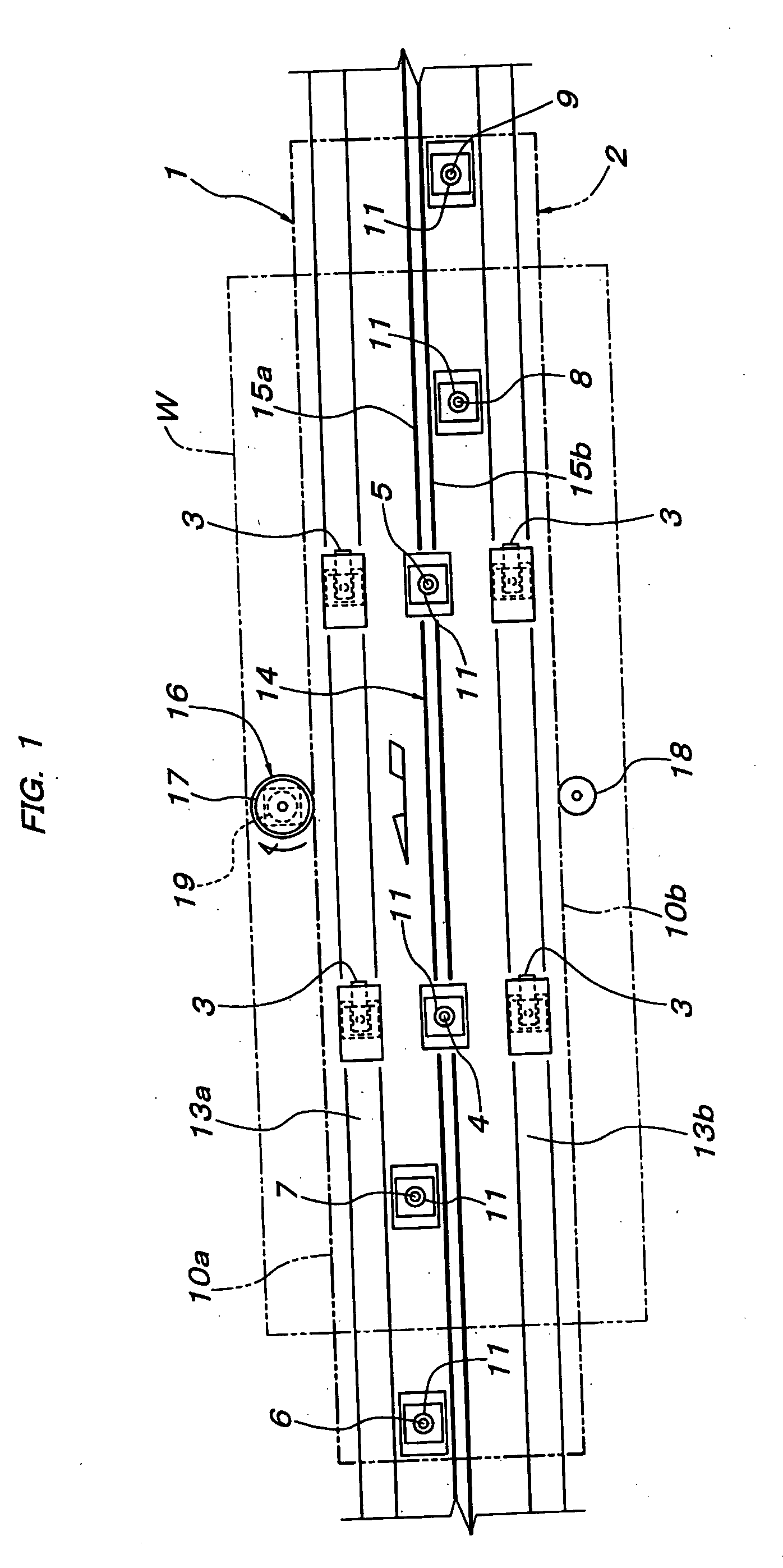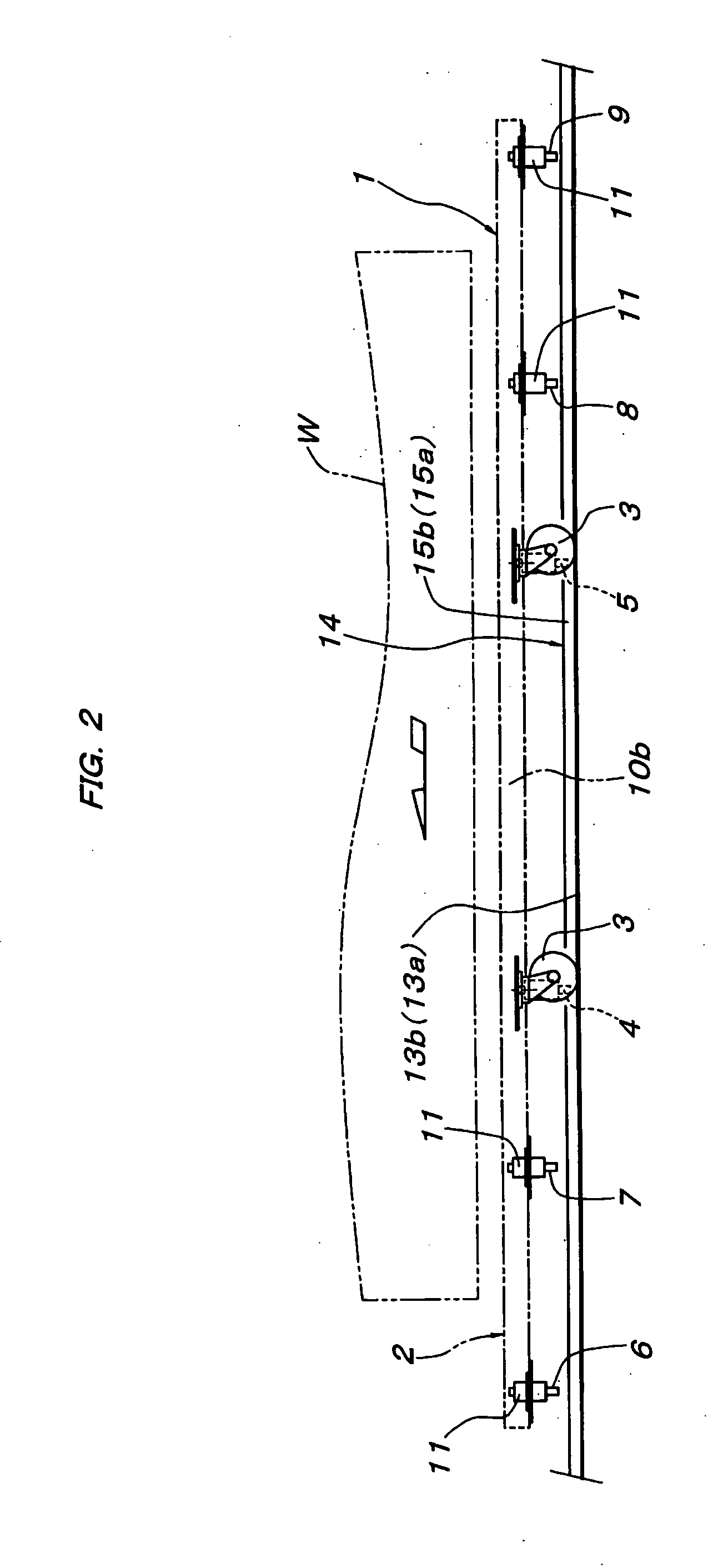Carriage type conveyor
a conveyor and carriage technology, applied in the direction of transportation and packaging, rope railways, roads, etc., can solve the problems of difficult conveyor implementation and increase the cost of equipment, and achieve the effect of simple structur
- Summary
- Abstract
- Description
- Claims
- Application Information
AI Technical Summary
Benefits of technology
Problems solved by technology
Method used
Image
Examples
Embodiment Construction
[0023] With reference to FIGS. 1-5, a friction-drive carriage type conveyor embodying the present invention includes a carriage 1, which runs in a running direction along a horizontal closed-loop track on a floor. The carriage 1 includes a long integral deck 2 for supporting a car body or another work W. The deck 2 has no horizontal joint between both its ends.
[0024] The deck 2 has a pair of frictional surfaces 10a and 10b formed on its right and left sides, respectively, in the running direction. The frictional surfaces 10a and 10b are the right and left side surfaces of the deck 2 itself. Alternatively, the frictional surfaces 10a and 10b might be side surfaces of one or more longitudinal members fixed to the deck 2.
[0025] The bottom of the deck 2 is fitted with a pair of front casters 3 and a pair of rear casters 3. The casters 3 are positioned on both sides of the center line of the deck 2.
[0026] The bottom of the deck 2 is also fitted with a front main guided member 4, a rea...
PUM
 Login to View More
Login to View More Abstract
Description
Claims
Application Information
 Login to View More
Login to View More - R&D
- Intellectual Property
- Life Sciences
- Materials
- Tech Scout
- Unparalleled Data Quality
- Higher Quality Content
- 60% Fewer Hallucinations
Browse by: Latest US Patents, China's latest patents, Technical Efficacy Thesaurus, Application Domain, Technology Topic, Popular Technical Reports.
© 2025 PatSnap. All rights reserved.Legal|Privacy policy|Modern Slavery Act Transparency Statement|Sitemap|About US| Contact US: help@patsnap.com



